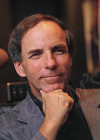HOME | ABOUT US | MEDIA KIT | CONTACT US | INQUIRE
HOME | ABOUT US | MEDIA KIT | CONTACT US | INQUIRE
America’s medical-education complex faces a crisis of its own making with its loss of focus.

I had the privilege this past year of editing Dr. Stanley Goldfarb’s book, “Take Two Aspirins and Call Me by My Pronouns.” Before getting involved in this project, I had been a staunch defender of American medicine. Afterward, not so much.
Forever an optimist, however, I am hoping that physicians will follow Dr. Goldfarb’s prescriptions and heal themselves.
Dr. Golfarb is no slouch. A prominent kidney specialist, he also served as associate dean for curriculum at the University of Pennsylvania School of Medicine. It was from that perch that he saw what was happening to medical education nationwide. Spoiler alert: it wasn’t pretty.
Going public with his concerns took some cojones on Goldfarb’s part. It was sort of like a Russian general telling Putin the Ukraine thing wasn’t going quite as planned. Not having reached the gulag stage, the powers that be at U Penn simply chose to airbrush Goldfarb from history. Literally. In an impressively Orwellian response, Goldfarb’s medical unit at Penn removed from its web page all references to its former co-chief, now officially a non-person.
Old-fashioned guy that he is, Goldfarb made the mistake of arguing that med students and interns were spending too much time on courses like, say, social policy and gender equity and too little time on subjects like biochemistry and physiology.
“One can argue—up to a point—that physicians have unique skills and knowledge and that their efforts are best spent on traditional ‘medical’ concerns,” wrote one Goldfarb critic. “But there’s a problem when hateful stereotyping and inflammatory rhetoric enter the conversation.”
Having read every word of Goldfarb’s book multiple times, I can assure would-be readers there is nothing “hateful” or “inflammatory” about it. Today, to criticize any feature of the progressive juggernaut is to risk being labeled a “hater” or worse, which is why so few doctors speak out, which is why, until last year, I did not have the slightest clue about the radical rewiring of medical education.
Goldfarb’s consignment to the memory hole was not an anomaly. Those with an open mind might just take a gander at the American Medical Association’s master plan titled “Organizational Strategic Plan to Embed Racial Justice and Advance Health Equity, 2021–2023.” The AMA is not some rogue outfit. Founded in 1847, it is the primo professional association of the medical establishment.
The title seems benign enough, but the devil, as usual, is in the details. The fact that medical schools do not hand out participation trophies—at least not yet—troubles the report authors. From their perspective, the core ailment plaguing medical education is, what they call “the myth of meritocracy.” They see this myth as the most concerning of several “malignant narratives” that infect the health-care world. The scare italics are theirs, by the way.
As Goldfarb sees things, an emphasis on STEM courses has a way of differentiating students who know their material from those who don’t. Instead of that bothersome science stuff, the AMA master plan encourages medical educators to “address the broader issues of the climate, societal norms, macroeconomic social/health policies, and the systems of power that shape social hierarchy and gradients.”
For years, to be sure, medical schools have taught about the effects of climate on health. Historically, doctors have been schooled in treating everything from frostbite to tropical diseases, as well as other more prosaic climate maladies like heat stroke and sunburn.
But the AMA master plan has little to do with actual medicine and everything to do with activism. Aspiring doctors are urged to participate in “global health and sustainability initiatives” and learn the wonders of “locally sourced, plant-based diets.” Paging Dr. Thunberg!
“It’s time for medical schools to introduce climate change into their curricula,” insisted a 2018 article in the prestigious journal Academic Medicine. Reportedly, some 200 medical schools have already done just that. Designing a curriculum, however, is a zero-sum activity. Every course in, say, “Health Care System Decarbonization and Resiliency” means one fewer course in Anatomy or Physiology or Biochemistry. And climate is just one spoke in the intersectional wheel of social justice.
As Goldfarb suggests, curricula are purged of the hard stuff for one prime reason, namely to better recruit and retain groups “underrepresented in medicine.” Today, medical educators don’t have much choice in the matter. Accrediting agencies can be very tough on educators who resist.
Consider the case of the University of Utah School of Medicine. In a 2021 review, its accrediting organization, the Liaison Committee on Medical Education, spanked the school for its unsatisfactory efforts on the DEI front. Most notable was the medical school’s failure, since last spanked, to recruit any new women faculty in the “American Indian/Alaskan Native, Native Hawaiian/Pacific Islander” categories. (I hate the word “granular,” but damn, this is some granular stuff.)
The school responded with, among other activities, an “Indigenous STEM Youth Outreach Program” as well as a gathering with the unwittingly ironic name, “Day of the Dead Premedical Conference.” In addition, it held “diversity recruitment days,” offered scholarships to students from “underrepresented populations,” mandated anti-bias training for its admissions staff, switched to a “holistic” admissions process that gave great weight to a student’s “cultural awareness” essay, and demanded a “diversity statement” from would-be faculty.
All of this costly hoop-jumping made little impression on the accreditors. They begrudged the school with a rating of “satisfactory with a need for mentoring” and gave the school a year to come up with a more groveling progress report.
So here’s where we are today. Those who think meritocracy in medicine a malignant myth can be as loud as they want with their protests. Those who think otherwise—most readers, I suspect—are well-advised to keep their mouths shut.
As Dr. Goldfarb can attest, being a non-person is not much fun.
Leave a Reply